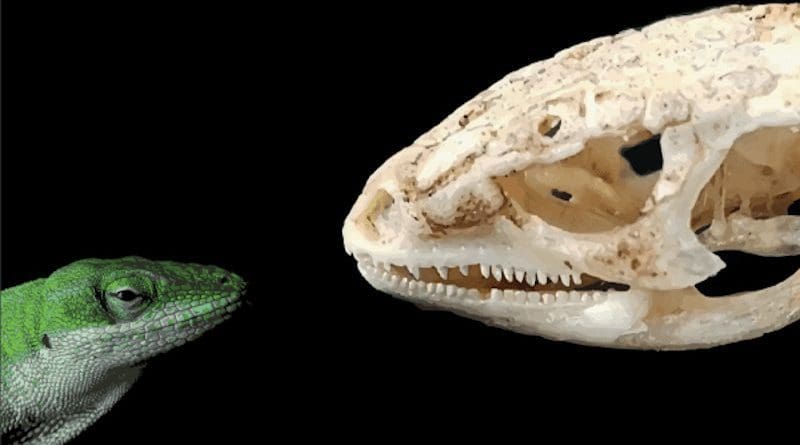Most Animals Are Decreasing In Size As Result Of Global Warming
Scientists from the University of Granada (UGR) and the Pontifical Catholic University of Chile have succeeded in explaining why ectotherms (animals whose body temperature depends mainly on environmental temperature—that is, most animals) are reducing in size as a result of global warming.
Their study, published in the journal Nature Climate Change, offers the first plausible physiological explanation for the general reduction in organism size that has been observed, as a consequence of global warming. Rising temperatures lead to metabolic restrictions which restrict growth—in other words, the animals cannot develop to achieve larger sizes.
Ignacio Peralta-Maraver, the lead author of the work, has recently joined the Department of Ecology at the University of Granada as a “Juan de la Cierva” Research Fellow and will develop his research within the ‘Modelling Nature’ Unit of Excellence.
He explains: “Ectotherms, a group that includes the vast majority of animals, more or less depend on the ambient temperature to regulate their metabolism. For this reason, the enormous range of body sizes they present is surprising (about 12 orders of magnitude, from micrograms to tonnes), relative to the temperature range in which life develops (mostly between 0° and 40° C). Given that metabolism increases proportionally with size, how are animals of such disparate scales going to cope with global warming?”
After nearly three years spent investigating hundreds of scientific papers and museum collections, the researchers have collected a total of 637 empirical measurements of thermal tolerance and size among different species including annelids, molluscs, arthropods, fish, amphibians, and reptiles. Using these data, and taking into account both the intensity and the duration of the thermal stress to which the organisms were subjected, the researchers have formulated an equation that enables the thermal tolerance of ectotherms to be quantified.
“This equation reveals that large and small animals respond differently to thermal stress as a result of the interaction between size and thermal sensitivity,” says Peralta-Maraver. Thus, smaller animals have a greater tolerance to extreme heat than larger ones, but their survival rate declines sharply, the longer their exposure to heat, which reduces the differences in endurance over long periods of exposure”.
This discovery has major ecological implications, as it helps in understanding how ectotherms will respond to global warming. Furthermore, using the coefficients of their equation, the authors have corrected the thermal tolerance limits that were previously calculated for natural populations around the globe, warning of a huge overestimation produced by traditional forecasting methods.
Furthermore, by combining this new analytical framework with well-established equations from metabolic theory, the UGR researcher, together with the Chilean researcher Enrico L. Rezende, has mathematically demonstrated that metabolic limits also scale with size. With increasing size, death due to thermal stress occurs at a lower metabolic rate compared to rest at a non-stressful temperature.
“This means that relatively large animals will see their development and growth capacity compromised due to the effects of climate warming”, the authors conclude.

